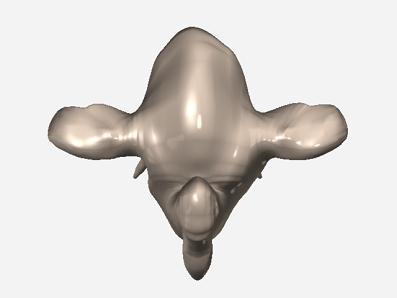


“We know that we can grow these cells in some species so we know we can get there. “These are the technologies that are required for any sort of gene-editing in birds,” Shapiro noted. For this reason, Colossal has launched a broader collaboration called the Avian Genomics Group that could have wide-reaching consequences for bird conservation, regardless of whether the company actually achieves their vision of resurrecting the dodo. Given that most cloning and gene-editing technologies focus on mammals, Shapiro and her colleagues acknowledge that they will need to be creative in their approach.
#Dodo bird images dodecahedron how to
The researchers will also have to figure out how to get a dodo embryo into an egg so that a new generation of birds can successfully hatch. Getting the right genetic ingredients for a dodo proxy is only the first hurdle in what may be a long scientific quest. “The hope is that we can use, first, comparative genomics so we can get at least one, and hopefully more, dodo genomes that we can use to look and see how dodos are similar to each other, and different from things like the solitaire.”įrom there, the team will “compare those to the Nicobar pigeon, and other pigeons, and identify mutations in that genome that we believe may have some phenotypic impact that made the dodo look like a dodo instead of like a Nicobar pigeon,” she continued. “Once a species is extinct, it's really not possible to bring back an identical copy,” Shapiro said. “There's a lot of benefits from a conservation perspective, in terms of what we can learn from rewilding.” “I think this is an opportunity where, given the man-made nature of the extinction of the dodo, man could not only bring the dodo back, but also fix what was done to parts of the ecosystem to reintroduce them,” noted Lamm in the same call. “It’s the poster child, in a sad way, for how human habitat alteration can drive species to extinction.” “I've always been fascinated with the dodo,” said Shapiro, who led the team that fully sequenced the dodo’s genome for the first time, in a call with Motherboard. The team envisions the return of a “proxy” version of this idiosyncratic bird, meaning a species with edited DNA as opposed to an exact clone, to its original habitat in Mauritius. Now, the company has added the dodo to its de-extinction wishlist and tapped Beth Shapiro, an evolutionary biologist at the University of Santa Cruz, to back the project. In the process, the company hopes to pioneer new technologies with applications in conservation biology and human healthcare, to name a few. Colossal is already working on efforts to de-extinct the wooly mammoth and thylacine (aka the Tasmanian tiger), and reintroduce them to wild habitats.


 0 kommentar(er)
0 kommentar(er)
